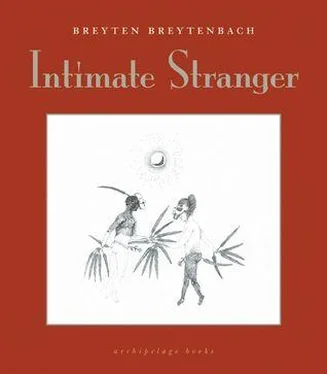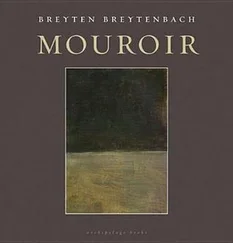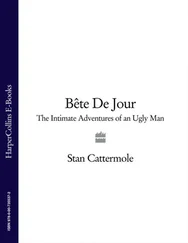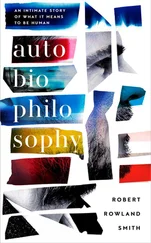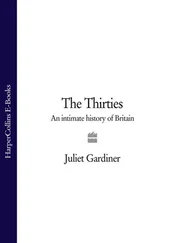We measure the world — or what we can experience of it, that which we call ‘life’ — by the reach and limitations of ‘self,’ which is consciousness in process. Which is word. And when that self disappears, will life be one endlessly unfolding but invisible text with neither head nor tail? For now we know that the elements and mechanisms of life and writing (mirage and mirror) are alike: a patternmaking of understanding, recognizing that textures and colors as surfaces of awareness are needed to make reflexability tactile. Thus are we tied to living. We cannot let go (if such should be our intention) until and unless we know how inextricably we are tied to continuation by our senses, by the breath of shaping through structure and rhythm, by this long dialectical dance of completion / extinction.
So, the link (the sameness of process) between ‘story’ and ‘life’ (or fiction and fact if you prefer) is in the telling: self-telling, telling the time and the temperature, telling it on the mountain. The self as transit point of awareness is a tale. To recount a fact — or advance an opinion, as in an essay, and we mostly take our opinions to be facts, particularly when they figure in an essay! — is to be entering a process of fictionalization. Not only because the contours of ‘facts’ are delineated by our situation and approach, depending on who we are and from what culture, and not only because the hardest fact must still be put in its historical relativity and will then be seen to be evolving — but also, as I suggested earlier, because the tools of apprehension are means of creativity and thus of metamorphosis. The first location of a thought, as carried through the essay, for example, is after all language. Seeing is shaping.
This way of looking (defined by the modalities of perception and the traditions of understanding) will constitute its own presence. That is why I prefer to talk of the self of fiction . The discourse has a face that will start pulling faces. This may well be what we mean by ‘voice.’ And so, without blurring the demarcations any further, but in recognition of the many ways in which fact and fiction interact and temper one another, I wonder whether we shouldn’t modify the categorization to fictionality and factionation : ‘fictionality’ with its echoes of ‘finality’ and ‘rationality’ and even ‘nationality’; ‘factionation’ with its associations of ‘fascination’ and ‘imagination’? Thereby allowing fiction to be more fixed and fact to be more fluctuating or factitious, maybe facetious, to be the de facto nation (or station) of fictions?
What remains of the differences between fact and fiction? Certainly there’s much less of a contradiction between these two ‘opposites’ than we’re led to assume. For starters, we need to imagine (visualize, format, relate and situate) even the simplest fact in order to grasp it. Making sense necessitates a constant telling to self of the observed phenomena, and thereby it becomes a story. Furthermore, the fiction will establish a presence, leave an imprint, act as fact with its surroundings. It is nevertheless useful to keep the two poles alive so that we may, in the process of teasing out differences and incompatibilities and similitude and sameness, hone our skills of perception and interpretation.
Skill can be vitally important. And so is the ability to distinguish between ‘reality’ and ‘story’: operating on a human being or piloting a passenger aircraft, say — there is surely no room here for suggesting that “all observations and interpretations are equally truthful.” The example often used is of the hunter depending for a livelihood on his ability to correctly ‘read’ the prints of his prey, and thus of making distinctions between fancy and fabrication. It is a fact that he needs to know this so as to bring home to family and affiliates the fat and the meat. They may not care a fig for his flights of imagination! Still, his reading of the traces will be informed not only by acquired knowledge and discernment, but also by the invisibles, by imaginings. Even a deduction based upon experience will still have a measure of imagination as locking device. We imagine in order to understand. By writing we enter a dialogue between fact and its fictions.
We know now that writing will change us and therefore modify our relationship to the world. We also know that it will be like throwing stones in the river in an effort to get across. This is a singular journey. There are dangers along the way: the stones may turn into crocodiles or they may have dissolved, or we may be side-lined into dreaming of just going with the flow as we study the patterns of swirl and froth and (mirror) nothing more.
What we are hopefully going to learn about is how to find passages through our fear of writing/change. We’ll look at strategies for wording the spaces between I and You. In so doing we shall be studying, as we always must, in close and critical reading of our diverse and multifarious stories, looking at both sides of the avenues of reflection, the concrete exigencies of composing a text: theme and its formulation, the choices the writer makes when he creates characters, techniques of representation and angles of intervention, structuring and texturing, rhythm and rupture and repetition, the tension between thought and image, etc. Particularly the etceteras. It may even help us identify the stones we’ll be eating.
NEW YORK, 12 SEPTEMBER 2001
“Then it went dark. Real dark. Like snow.”
words of a survivor
will the hand endure moving over this paper
will any poem have enough weight
to leave a flight-line above the desolate landscape
ever enough face to lift against death’s dark silence
who will tell today
the huge anthill of people remains quiet
somber and shrill, bright and obscure
as if the brown effluvium of sputtering towers
sweeps still the skyline with a filthy flag
who will weep today
today images wail for voice behind the eyes
planes as bombs stuffed with shrapnel of soft bodies
then the fire inferno flame-flowers from skyscrapers
human flares like falling angels from the highest floor
down, down all along shimmering buildings of glass and steel
fluted in abandoned beauty and fluttering
weightless and willowy and flame-winged to streamline
fleeting reflections in the fugitive language of forgetting
the hell-hound of destruction has a red tongue of laughter
who will tell and who will count
gouged eyes do not understand the blue of sky
through a dismal and chilly nuclear winter
people stumble people shuffle
stumble-people shuffle-people worm-white-people
where lie the faces
old before their end or their wedding
grayed in ashes from head to toe
as if clothed in coats of the snowing knowing of ages
beneath rummage and debris rosy corpses move and mumble
and in East River confidential files and folders float
with shreds and feathers lacerated human meat
scorched confetti for the dog’s feast
who will tell tomorrow tomorrow
where are the faces
will the tongue still think
still pulse its dark lair
with flamed memory of bliss
will words still drink oblivion
will any poem some day ever carry sufficient weight
to leave the script of scraps recalling fall and forgetting
will death remain quivering in the paper
I sit here with bent shoulders, eyes smarting from looking at the screen as if searching for the truth. The screen is a lit funnel giving onto darkness. Is there light at the end of the tunnel? Writing this as a diary, slithery snake, knowing I will never be able to cover the days or foresee the nights. Writing is such a contradictory process.
Читать дальше
